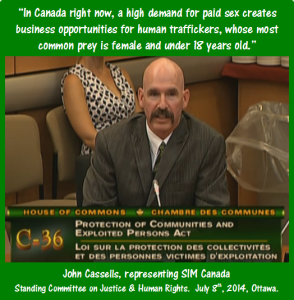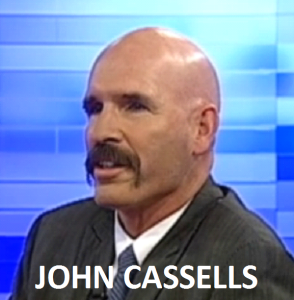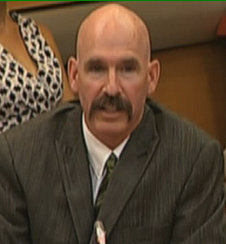Tag Archives: prostitution laws
MS. JUSTICE MINISTER, About Those Prostitution Laws…
Below is a letter I sent to Canada’s federal Justice Minister on November 23rd, 2015 regarding Canada’s prostitution laws. Because the current government has expressed interest in changing or removing the legislation, you may also want to express your concerns. Please feel free to borrow from my letter as you compose your own. Remember to include your own MP, along with Justice Critic, Rob Nicholson.
Jody.Wilson-Raybould@parl.gc.ca Rob.Nicholson@parl.gc.ca
Dear Ms. Wilson-Raybould, You have my deep appreciation for your willingness to take up the mantel of Justice Minister of Canada. 2015 certainly is the right timing for an aboriginal leader of your stature to advocate for the rights of Canadians at the federal level.
 As you’re well aware, there are presently great opportunities to shape the way Canadians think about gender equality and aboriginal issues. And there is no more important matter before you than the exploitation and violence that befalls countless young and vulnerable Canadians in the sex trade. I’m confident that it’s from a compassionate desire to help, that the government might consider a different approach in prostitution legislation.
As you’re well aware, there are presently great opportunities to shape the way Canadians think about gender equality and aboriginal issues. And there is no more important matter before you than the exploitation and violence that befalls countless young and vulnerable Canadians in the sex trade. I’m confident that it’s from a compassionate desire to help, that the government might consider a different approach in prostitution legislation.
There is a great deal of confusion on this issue. And, as you receive input, I can only imagine how conflicting, and potentially misleading, the messages will be. From the perspective of one who has extensively studied this issue, and also, walked alongside countless exploited young people during the past 30+ years, please allow me to offer my input. I’ll do this by briefly addressing three of the most common fallacies you’ll be hearing about prostitution.
With various other western countries having changed their legal approaches to prostitution in recent years, we have the vantage point of learning from their experiences. The body of evidence (the actual studies as opposed to select anecdotal reports), internationally, strongly demonstrates that decriminalization increases not only the volume of sex trade activities, but also the rate of human trafficking and other forms of violence.
When Bedford versus Canada was brought before the Supreme Court, Alan Young (the lawyer who challenged constitutionality of the old prostitution laws), testified that no country that legalized prostitution has met their objectives in reducing violence. The only reasonable conclusion, for the Canadian context, is that that legal prostitution would actually decrease safety for prostitutes and increase the criminal element.
Canada’s human trafficking laws are important for punishing violent individuals and raising awareness about this hideous crime. But ironically, they do very little to stop human trafficking. In fact, it’s the prostitution laws that can potentially have a much greater impact on this phenomenon.
 To understand the game, you need to know the players. The trafficker, or “pimp”, is rarely a serious businessman. While a great deal of money changes hands, it slips through his fingers as quickly as it comes. Pimps operate in a subculture where achievement is gauged primarily by notoriety. Avoiding prosecution does nothing to build the infamy that is the quintessential measure of success. Because of that, risk of arrest can be as much an enticement as a deterrent.
To understand the game, you need to know the players. The trafficker, or “pimp”, is rarely a serious businessman. While a great deal of money changes hands, it slips through his fingers as quickly as it comes. Pimps operate in a subculture where achievement is gauged primarily by notoriety. Avoiding prosecution does nothing to build the infamy that is the quintessential measure of success. Because of that, risk of arrest can be as much an enticement as a deterrent.
Contrast that with the typical sex buyer, or “john”, who cultivates the opposite persona. To protect his good and decent reputation, he will avoid arrest at all costs; even if it means utilizing a little self-control. On balance, the pimp, is more violent than the john, and so, he more easily draws our contempt. But if not for the buyer, there would be no pimps.
Like any industry that operates on the principal of supply and demand, if the money stops, the industry grinds to a halt. You cannot stop the violence of the sex trade and also allow men to fund it. Therefore, the most effective way to stop the violence is by prosecuting the men who buy sex.
As long as one remains in proximity to the darkness of the sex trade, perceptions are skewed; laws are cruel, police are the enemy and violence should be accepted as a normal part of life. The things that expose a woman to, and keep her enmeshed in, the underworld, should rightfully evoke compassion and a desire to understand. But she must not be the one to guide us on matters of justice, while in that mindset.
There are, however, many who, exit the sex trade and regain their place in society. And they do this in the face of seemingly insurmountable obstacles. These are the “sex trade survivors”. When they cut their ties to the street, they can begin to heal; with the change of environment, they can start to hope again. While some avoid any talk about the violence they escaped, others confront it, speaking on behalf of those who either have no voice or cannot grasp the truth. Ms. Wilson-Raybould, you have promised to proceed in a way that is open and engages with people. I’m wholeheartedly behind you. If you want to help those caught in the sex trade, listen not to “sex workers”, but to those who can accurately explain what it means to be one.
The Canadian model on prostitution provides this country’s very first offering of meaningful protection from commercial sexual exploitation. And it aligns with the values of Canadians, as the voices of the 31,172 respondents to the federal government’s public consultation clearly indicate. The rationale for discouraging the prostitution is well founded. Some of Canada’s leading police forces are now beginning to use the new laws to more effectively protect vulnerable women and children. Toronto Police Sex Crimes Unit Insp. Joanna Beaven-Desjardins publically put her city’s ‘johns’ on notice last Thursday, saying, “We’re coming after you. You are the problem.” York Regional police have arrested at least 22 sex buyers so far, this month. The list goes on.
The Liberal government will fail if the intent is to create safety within a burgeoning sex trade. Toronto Pharmacist, Allen Chow had the opportunity to amass 70 hours of rape videos because it was, at the time, legal for him “hire” prostitutes. You will not significantly reduce the harms that result in the chronic medical conditions, addictions and mental health problems that plague prostitutes. You won’t stop them from taking their own lives, or been killed, directly. And you’ll make little ground on women’s issues, and especially aboriginal women’s issues, as long as men can rent their bodies. To undo our new prostitution laws would be a callous betrayal of those they were meant to protect.
I sincerely thank you for your diligence on this critical matter,
John Cassells, Street Youth Specialist, SIM Canada
NEW PROSTITUTION LAWS TOO MORAL?
 When Peter Mackay reported earlier this year that prostitution is “very corrosive” to our society, many scoffed at his moral stand. Though he hadn’t started the debate, Mr. Mackay was in the middle of it when the Supreme Court ruled our prostitution laws unconstitutional last Christmas.
When Peter Mackay reported earlier this year that prostitution is “very corrosive” to our society, many scoffed at his moral stand. Though he hadn’t started the debate, Mr. Mackay was in the middle of it when the Supreme Court ruled our prostitution laws unconstitutional last Christmas.
Now that new prostitution laws are in place, clearly, the federal justice minister got the last word.
It all started in 2007 when York University’s Alan Young sought to have Canada’s three main prostitution laws overturned in a case called Bedford versus Canada. Young’s hope was to legalize brothels, suggesting it might a way to increase safety for prostitutes. He also asked that the so-called pimping law (living off the avails) and public solicitation constraints be stricken from the law books.
“The ruling wasn’t that legal prostitution was right for Canada.”
Among those who countered Mr. Young’s arguments were The Evangelical Fellowship of Canada, the Christian Legal Fellowship, the Catholic Civil Rights League and REAL Women of Canada. While it became apparent that the old laws were not very effective, it was to the dismay of Evangelicals across the country that the Supreme Court sided with Mr. Young.
The ruling wasn’t that legal prostitution was right for Canada. The ruling was that the old laws were inadequate. Ironically, it was over concern for safety that the court suspended the ruling, giving Parliament a full year to restore some sense of virtue to the matter.
In an earnest response, Justice Minister MacKay declared that the government “has grave concerns about the exploitation that is inherent in prostitution and the risks of violence posed to those who engage in it.” He went on to promise new laws to “protect human dignity and the equality of all Canadians by discouraging prostitution.”
On June 4, MacKay delivered on his promise. Bill C-36 created a fundamental shift, from speaking about prostitution as a social annoyance, to understanding it as a degrading and abusive industry. At the center of the bill was something not tried before in this country.
While the old laws had merely restricted the buyer from soliciting in public and dealing with minors, the new legislation proposed that buying sex would be completely banned.
The legislation was too moral for some. An enormous backlash ensued. On the extreme were a few, like Toronto Star columnist Rosie DiManno, who came out swinging in support of the men who buy sex. “What I’m most adamantly not,” she erupted, “is a feminist evangelical who will find concordance and compatibility with preachy prudes.”
Others glibly wrote the whole thing off as a political game.
Though C-36 was not able to shake its reputation as a controversial bill, the Conservative majority government provided the necessary approvals. On December 6, the new laws came into force.
Sex cannot be purchased anytime, anywhere in Canada. In contrast to that, legal immunity will be shown to the seller of sex (the prostitute), in most situations.
At first glance, the legislation might seem off balance. How can something be OK to sell, but not to buy?
The government felt it was unjust and counter-productive to punish those who are, by and large, victims, not freely choosing the sex trade. Beyond that, the government searched for a legal framework to effectively lower the risk to the prostituted. They found none. The clear path then, was to reduce the total volume of prostitution. And so decisive action was taken to reduce the demand for paid sex – by deterring the buyer. The anticipated result is that far fewer girls and women will find themselves in the sex trade, thereby being protected from its violence.
Underreported in media are the many experts who support the government’s strategy. Casandra Diamond, Director of the Christian agency BridgeNorth, is nationally recognized as an authority on the Canadian sex trade. In July, Diamond explained to a House of Commons committee, “Decriminalization is not the answer, and will not wrestle this lucrative globalized industry out of the clutches of organized crime.” She went on to praise the government for their compassionate response in Bill C-36, and agreed that prohibition on the purchase of sex would offer real hope to the exploited.
MP Joy Smith, the foremost champion of the new legislation, says, “As a nation, we must ensure dignity and equality are upheld for all, especially for those who are most vulnerable to abuse and exploitation. Bill C-36 is a significant leap forward for Canada.”
There’s no denying, Canadians are being called to a higher moral standard on the issue of prostitution. Not everyone is willing to jump on board.
Still, it’s the Canadian Constitution, founded on Christian principles, that requires Parliament to stand in support of the vulnerable, confronting those who cause harm. In this case, it seems the government has done an excellent job. Perhaps our new prostitution laws are just moral enough.
This article can also be found on the Faith Today website, HERE.Man to Man on Buying Sex.
In response to my last blog entry, “Bill C-36, A Better Direction For Prostitutes?” I received a letter from a gentleman who sees things differently. In fact, we’re in direct opposition. Essentially, he thinks buying sex should be allowed in Canada; I do not.
William writes: “I am a ‘john’. I buy the services of escorts, companions, prostitutes. For many, this conjures seedy imagery of some low-life preying on society’s most vulnerable. In the words of our Justice Minister, I’m a pervert. Yet, despite the dark stereotype, I am a law abiding respectful person, loved and respected by my family, and very well regarded in my profession and by my community. Truth is, there is no such thing as a typical John or for that matter a typical prostitute. We all have a story to tell.”
“In my case I was married for close to forty years to my soul mate. Despite my loneliness, I refuse to replace my past love with another. It is unfair to ask a new partner to stand in as a life-long surrogate. I have found a solution that fits my needs: paid companionship. The women I meet come from all walks of life. These ladies are strong, intelligent and very well educated. They freely choose to be paid companions. They assume different roles: dinner companions, confidantes, sexual partners.”
I have to say, William doesn’t strike me as a misogynist or for that matter, a “pervert”. He doesn’t seem to have a shred of sadistic compulsion, and presumably. isn’t going after the underage girls, as so many do. And his rationale raises some interesting questions. What about escorts who don’t seem to be powerless, broken people; the ones who appear to be in that place by their own volition? What if, the interactions are less about sex and more about companionship? Is there a reasonable place to draw a line between exploitation and the legitimate purchase of companionship?
Those questions take me back to an interview* with Chelsea Haywood who, for three months, was a hostess in a Japanese men’s club. She captured her experience in a book, ’90 Day Geisha’. The bright young Canadian woman was 20 years old, socially engaging and well poised. Her job was to sit at a table with men and make conversation; perhaps not unlike William’s “dinner companions”. She was always impeccably (and fully) dressed and never sexually engaged the customers. In her words, “Your personality is your commodity.”
While it sounds like an easy gig, Haywood speaks of the “emotional demands” of the self-commodification and the exhaustion she, and her fellow hostesses, experienced. She suggests that those in this line of work should receive therapy and reports that many cope with excessive drinking and drug use. Likening her experience to prostitution, Haywood reveals “I wasn’t myself…I’d changed”.
Crediting her husband, at the time, for being “incredibly supportive,” Haywood says, “If he hadn’t been there, I think I would’ve fled after the third night.” But ultimately, the strain of the three months created “fractures” in her marriage, and she blames it on her divorce.
I could have chosen from countless stories much more tragic than Chelsea Haywood’s. But that’s the point. The personal cost of her short three months in paid companionship, free from a single violation of sexual boundaries, lends perspective when we hear of those who endure a more lengthy and intimate exposure.
Because the sex trade follows law of supply and demand, one might also wonder about the effect of financing roles of paid companionship; especially when it includes “sexual partners”. Borrowing from my July 8th speech to the Standing Committee on Justice and Human Rights, men like William perpetuate “the processes of an industry that destroys young lives.” This is especially problematic in Canada because “a high demand for paid sex creates business opportunities for human traffickers.” I’m bold on these points because I’ve seen far too many young people who have been deeply wounded by the sex trade; most are trafficking victims, some are not.
Further to that, international studies continue to show that legal purchase of sex leads to a high demand for paid sex, which, in turn, leads to increased rates of human trafficking and a high incidence of prostituted minors. This phenomena is especially strong in western societies with strong economies, like Canada. While William may want no part in the harm caused be the sex trade, by virtue of his participation, I believe that he is in the wrong and he bears some measure of culpability in the violence.
MP Ève Péclet (NDP), one of the justice committee members, asked me if authorities were not further ahead to solely focus on the pimps, leaving the johns alone. The answer depends on the objective. If it’s to punish high pimps for harming people, that’s one thing. But understand, when you lock up a pimp, there’s always a “bubble gummer” ready to fill his shoes. If you want to see less young lives destroyed by the sex trade, you can’t win that fight unless you stem the demand. The way to do that is to criminalize sex buyers. (Incidentally, it was the NDP who invited, as a justice committee witness, sociologist, Chris Atchison. Mr. Atchison advocates for the rights of sex buyers and is the author of the project, ‘John’s Voice: Providing a Safe Place for Sex Buyers to Be Heard’.)
As William and I engaged in further dialogue, we did find some common ground. He pointed out the need to address the issues of unemployment, social benefits and lack of enforcement, noting these concerns are particularly important for women at risk and young girls. William also expressed a desire to see more support for outreach programs that provide viable alternatives to those women who are in ‘the life’ because of difficult circumstances. On that, he’s absolutely right.
William is right about another thing, we all have a story to tell; and I want to thank him for sharing his. When Bill C-36 becomes law, men like William could face criminal prosecution, at least where the purchase of ‘sexual services’ is concerned. Is that fair? You be the judge.
*90 Day Geisha, MacLean’s Magazine, December 2009Bill C-36: A Better Direction For Prostitutes?
Updated October 14, 2014
For the past six years we watched a handful of garish ‘sex workers’ clash with impassioned ‘sex trade survivors’ over differing views on protecting prostitutes. The former belongs to a pro-legalization lobby; the latter are advocates who believe prostitution constitutes violence against women and children. It was perfect fodder for news hounds.
The confrontations, rose out of a legal conquest to rid Canada of it’s ineffective and under enforced prostitution laws. Three seasoned working girls were named as the applicants in a challenge known as Bedford versus Canada, though it was all the doing of Alan Young, a York University law professor. Safety for prostitutes, we understood, was his end game.
Mr. Young was a spectacle in his wing collar and bands, but the media would inevitably be drawn to his colorful entourage in all it’s regalement. Spouting salacious metaphors, a leather-clad leading lady brashly claimed three successive court rulings as liberation for the “sex workers”. The last stand for our old prostitution laws was ended when Canada’s Supreme Court ruled them unconstitutional, last Christmastime.
Wondering about that need for ‘liberation’, we began imagining the behind-the-scenes reality of Canada’s sex trade. We challenged our own attitudes toward prostitutes; and then, the men who buy sex. And we wondered if the picture of a powerless young women in the hands of a draconian pimp was just part of the fantasy. Then we imagined legal brothels on our city streets. We didn’t like that, and we certainly didn’t want such establishments in our own neighbourhoods. But we conceded the violence must stop; and being told the laws create danger, we softened to the idea of legal prostitution.
Tabled on June 4th, Bill C-36 sent us in different direction on the quest for sex trade safety. At the center of the proposed prostitution legislation, is a move to quash an age old prerogative in this country; that you can rent a woman’s body. It also proposed leniency toward prostitutes, tougher penalties for pimps, along with added protections for vulnerable youth.
Many hailed it the right balance, audaciously dubbing it the “Canadian Model”. Opponents protested, saying it won’t add safety for sex workers. Neither was there consensus in Parliament. While NDPs, Liberals and Greens stood squarely against the bill, the arguments are all but over. On October 6th, Bill C-36 has passed it’s third reading, 156 to 124. The Senate, having already given the legislation a pre-study, is expected quickly approve it for passage into the law books.
Beyond the legislation, the Harper conservatives are also allocating 20 million dollars to help fund exit programs for prostitutes. The money is good start, but just as valuable, is the compassionate light it shines on a forgotten people group.
Just who are these ‘forgotten’ people? Justice Minister, Peter MacKay, tells us prostitutes are “predominantly victims.” Experts agree, they, on average, enter the sex trade in their mid’ teens. Most have histories of abuse and broken homes. Law enforcement agencies also claim that more than half are human trafficking victims, and almost all want to leave the sex industry.
Mr. MacKay’s solution is to replace our flimsy prostitution laws with real prohibition; quite the opposite to Mr. Young’s bid. But both seem committed to safeguarding the vulnerable, but in the end, only one will triumph. When Bill C-36 gets the rubber stamp this fall, Mr. Young will have to live with the realization that his best efforts actually cleared the way for this country’s most robust anti-prostitution laws, ever.
For a moment, hang onto your sympathy for the presumptive humanitarian advocate. There some parts of this story you may not have heard. Mr. Young, himself, diminished the notion of a moral objective, when he clarified before the Supreme Court, last year, that legal prostitution carried no promise of reduced violence. And when he suggested our old laws made selling sex more dangerous, he wasn’t speaking for all prostitutes; just a small empowered minority, to which the applicants belong. Under the Canadian Charter of Rights and Freedoms, that was enough.
International studies on the subject, go even further than Young’s assertions, indicating that legalized prostitution nets an overall increase in violence and human trafficking. Dropping laws has been a disaster in places like Germany, Australia and The Netherlands, where prostitutes have paid the ultimate price. On the other hand, countries imposing legal restrictions, particularly for the buyer, have seen the opposite effect, resulting in less violence and lower human trafficking rates.
If the same can be expected in Canada, then Bill C-36 sets the stage for a declining sex trade. With many prostitutes being put out of ‘work’, fewer teenage recruits will be drawn into that hell. Not until that point will the confusion really lift off this issue. Gradually, the average Canadian will comprehend that the buyer, whether a predator or a simple opportunist, commits no less a crime by handing over a few dollars.
As we’ve seen here, honoring our Charter of Rights and Freedoms, and also creating safety, is not always easy. But, in this case, we’ve found the path. The passing of Bill C-36 will head things in a better direction, not just for prostitutes, but the whole of our society.
Dear Mr. MacKay
Quote
Dear Mr. MacKay
John Cassells, March 18th, 2014
I salute all of you who took time over the past month to pen your input on prostitution legislation for the federal government (during the window of February 17th to March 17th). Perhaps you, like many others, painstakingly researched the issues and, in the end, just made your best judgement call. It really does come down that; a judgement call, because there is no perfect legal model to follow. But, there certainly is a wrong one. Legalization. There is more than a sufficient body of international research, to draw a line between legal prostitution and sharp increases in violent exploitation of women and children.
The legal challenge (Bedford vs. Canada) to our prostitution laws never really was about safety. Law Professor, Alan Young, who launched the challenge said this, of the violence, “We don’t know what will happen [if prostitution is legalized], but this isn’t about that.” Our law makers, however, see a golden opportunity to address that violence. Contrast Mr. Young’s assertion with Justice Minister Peter MacKay’s response, “Prostitution is a very corrosive part of what’s happening in society, and the Supreme Court’s decision in the Bedford case will require legislation to fill the gap.”
I invite you to read my response to Mr. MacKay’s invitation for input:
Dear Mr. MacKay, I commend you in your stand against legalizing prostitution and thank you for your dedicated work to protect vulnerable adolescents and adults through new prostitution legislation. Though the case at hand relates to laws for adults only, I include “adolescents” purposefully, and will say more about that. Thanks too, for inviting input from the public. You’ll see I’ve copied Peter Van Loan on this email; he is my Member of Parliament.
I’ve been a youth worker for more than 25 years. In that time I’ve worked with countless girls and young women who were trafficked in the sex trade. I’ve developed outreach programs and support systems for these young people, and successfully helped many leave the sex trade. I have spoken about prostitution and human trafficking at a variety of functions and in the media. I have also organized several such events. I remain committed to those who are harmed by prostitution and it’s related crimes, and will continue to address such needs in my work.
The glaring problem with our prostitution laws is that buying sex has never been illegal. Canadians like to think of themselves as a nation that upholds human rights and defends gender equality. However, allowing Canadian men to gain intimate control of women’s bodies through financial leverage, is in stark contrast to this country’s core values. That must be changed.
Prostitution is not just dangerous, it has a far reaching impact on the health and wellbeing of the prostitute. Saying that prostitution is a victimless crime, is problematic because it’s profoundly harmful to the psyche. Most prostitutes will suffer Post Traumatic Stress Disorder. Many will also develop serious physical health problems.
Adult prostitution is inseparable from the sex trafficking of minors. While prostitution laws address the involvement of adults in prostitution, there is a serious concern with the inflow of youth into the adult sex industry. This is because the sex trade is fueled by demand; and the highest demand is not for women, it’s for girls; children who are lured, controlled and perpetually violated. The lack of accountability on men who buy sex in Canada has led to a huge industry in trafficking girls 13 -17 years old. That number is in the 10’s of thousands, and each one of those numbers represents a young life destroyed by violence. This issue goes far beyond moral ideals or political bent, it’s a humanitarian crisis, callously created by Canadian men.
In principle, I also support the criminalizing of selling sex. I hold this view because I’ve seen that police intervention can be one of the most effective methods to provide options for those ensnared in the sex trade. If selling sex is illegal, you also have an easy answer to the question to “living off the avails”; it should never be allowed. My primary fear with prohibition of buying and selling sex, is that the legal system will punish those who are acting under duress or out of simple desperation. The intent of the law would need to reserve punishment for the prostitutes who are selling sex by choice. This would include a larger portion of male and transgender prostitutes, along with, as little as one in 10 female prostitutes. I would support full prohibition on prostitution on these conditions:
- The provinces and municipalities would generously participate in support services and court diversion programs to help women and children successfully exit the sex trade.
- Clemency for prostitutes would not be dependent on testifying against traffickers or Johns, because this is often not a reasonable expectation because of mental condition.
- Accountability would need to be placed on all jurisdictions to aggressively enforce laws pertaining to buyers (Johns) and traffickers/pimps.
If these measures cannot be reasonably achieved, I suggest looking to an abolitionist approach [or “Nordic Model,” which criminalizes the buying of sex and decriminalizes the selling of sex].
I like the results the Nordic model is getting in other countries and I’ve encouraged many hundreds of people to consider it’s merit. That being said I do have some concerns.
- We cannot expect optimum results from the Nordic Model unless we reform our welfare system. I say this because inadequate welfare systems are a major precursor to prostitution in Canada. Welfare in every region of Canada is inadequate, in that, 1) it doesn’t provide a livable wage, and 2) it systemically discourages recipients from seeking education and legal career opportunities.
- Legalizing the selling of sex would presumably give the green light to operating common bawdy houses. If that were the case, I fear that police investigations for minors and human trafficking victims could be considerably hampered because police access to these legal establishments could be more difficult to obtain.
If those concerns can be effectively addressed, then I consider the Nordic Model a viable option to full prohibition.
In closing, we absolutely must combat the demand for the flesh trade in Canada. We are long overdue to stop the legal purchase of sex. Mr. MacKay, you have a great opportunity to end the complicity of Parliament in the buying and degrading of vulnerable girls and women. I will look forward, with great interest, to seeing what you are able to achieve on this matter. Thank you for your diligent efforts to address injustice in our great nation.
Earnestly,
John Cassells
Street Youth Specialist, SIM Canada http://www.sim.ca/
Arkenstone Founder & Canadian Street Dialogues Blogger
Website & Blog Page: https://johncassells.com/
Facebook: https://www.facebook.com/arkenstonepresentations
Follow me on Twitter: https://twitter.com/johncassells
Confessions of an Outreach Worker
John Cassells || On Youth Work
 “Vegas. Said she was going to Vegas.” Andrew answered between gulps of homemade soup. “Buddy, with a big car, was buying her lunch from the first day she got down here. She felt special. She thought maybe he was going to help her get things sorted out. She was what? Eight, maybe nine days on the street…Can I get pair of socks? Wherever he took her, I hope she’s OK.”
“Vegas. Said she was going to Vegas.” Andrew answered between gulps of homemade soup. “Buddy, with a big car, was buying her lunch from the first day she got down here. She felt special. She thought maybe he was going to help her get things sorted out. She was what? Eight, maybe nine days on the street…Can I get pair of socks? Wherever he took her, I hope she’s OK.”
Except that she was sleeping on Queen Street during the chilly nights of mid’ October, she looked like any other teenager. She was nervous, when I approached. Her clothing was still clean and the name on her volleyball team jacket matched the one she gave me. “Jennifer”. I saw her twice over the course of a week. Then she was gone.
Street: 1, John: 0
The bad news is, the street beats us more often than not. But we don’t actually tell people that. And sometimes we can’t even admit it to ourselves. If a young person is to become homeless, it happens at 15 years old, on average -Jennifer’s age. It troubles me to tell you that these same kids don’t usually connect, in a meaningful way, with street outreach workers until they’re at least 17. In the first two years of being on the streets they are without appropriate support; repeatedly subjected to violence; not knowing who they can reach out to; not knowing who they can trust. I’m not OK with that.
Jennifer wasn’t actually the first one I saw disappear. There were a few before her. Around the time she went off the radar, Kaitlyn resurfaced. Like Jennifer, I had taken special note of Kaitlyn. I knew that she was particularly vulnerable, and I worried for her safety. Keeping an eye out for her was about all I could manage. I had a program to run. The responsibilities on my shoulders meant that I couldn’t be out on the street looking for lost kids every day, buying them lunch. In the case of these two precious young people, somebody else did just that.
When Kaitlyn returned, she was different. Her childlike innocence was gone -like when a young soldier returns home from war. Kaitlyn barely knew me, so I was glad to get this much: “I’ve been in Peterborough for the last year and a half. I went there with my boyfriend. Well, not really my boyfriend, as it turned out. Lots happened -lots I don’t want to talk about.”
Like Kaitlyn, there’s lots I don’t want to talk about either. In my newsletters, do I mention the ones I lost? Not likely. Don’t get me wrong. I still believe that inspiring people is an important role of mine. And I’ve got a hundred good news stories that do just that (PTL). But with young lives hanging in the balance, every opportunity requires our very best. Jennifer and Kaitlyn didn’t get my best, simply because I didn’t make time for them. While I tripled the number of street youth my program served, I did little to increase my program’s capacity to respond effectively the urgent needs of individual kids. Just running the thing, became all-consuming. I don’t think I’m alone in this. It seems to be the norm among outreach programs. The busyness of the program and the appearance of success is all too often placed ahead of effectively helping the ones in the deepest need.
In the world of youth work, much has changed, and youth agencies across the country are struggling to stay effective. Some are struggling to simply keeping their doors open. The problem I brought up here, is one of many that we face. What do you need to talk about? I’d love to hear from you.
It’s my hope that Canadian Street Dialogs will be a safe place unpack some of those untold stories, and where we can wrestle with the hard questions. It’s not actually meant as a place to confess our failures, but does provide an opportunity to honestly examine the challenges that lie before us. Together, we will move forward, building on our successes, charting new routes that lead us past the obstacles and onto more of the good work we love to do. That’s the purpose of Canadian Street Dialogues: candid discussions on reaching street involved youth. Thanks for reading.
-John








